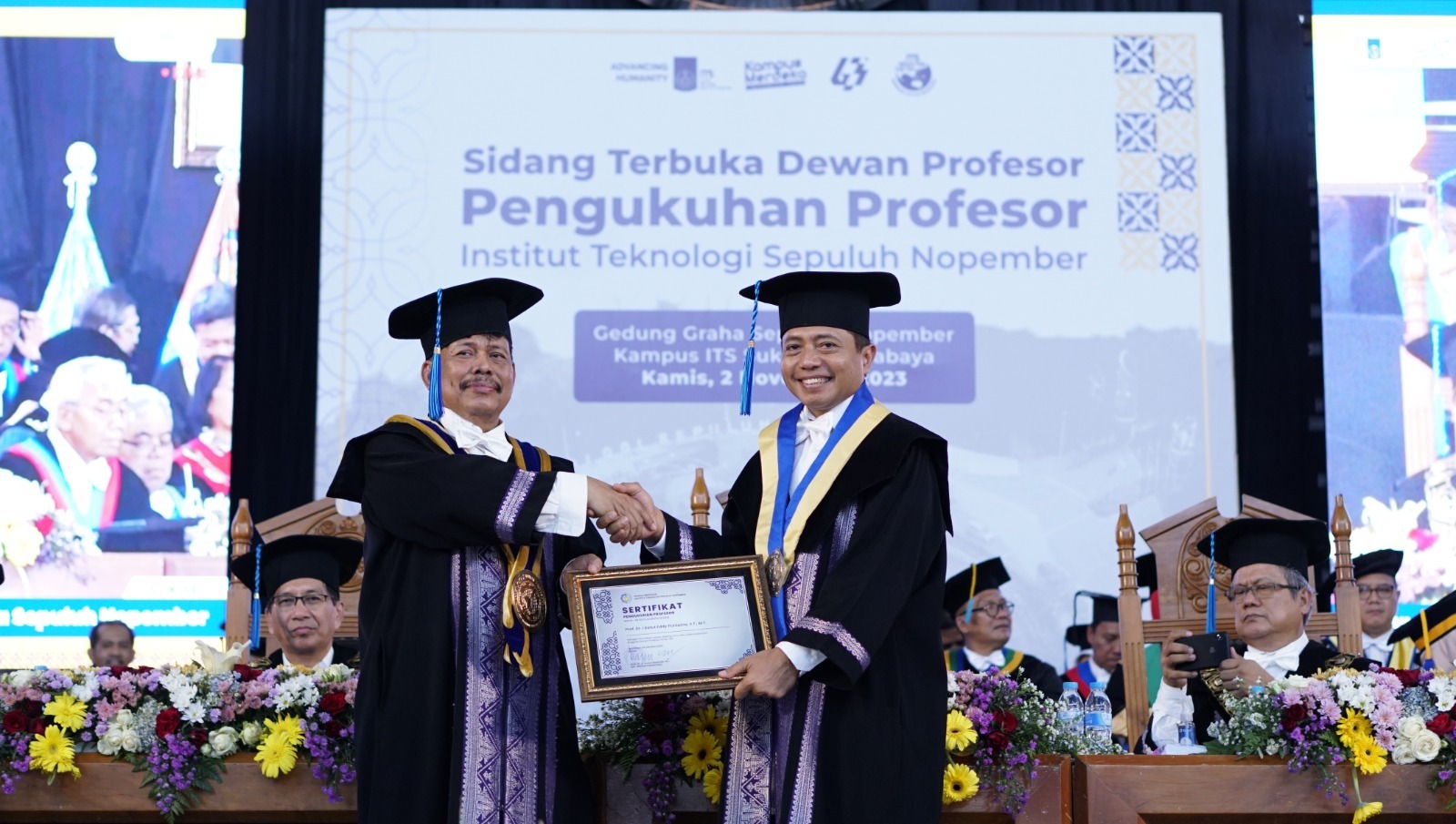ITS Professor Implements Intelligent Healthcare Services Through Telematics Integration

Prof Dr I Ketut Eddy Purnama ST MT when delivering his scientific oration on healthcare telematics at the ITS Professorial Inauguration event
ITS Campus, ITS News – The realization of intelligent and comprehensive healthcare services is increasingly possible in Indonesia. Recognizing this opportunity, the 188th Professor of the Sepuluh Nopember Institute of Technology (ITS), Prof. Dr. I Ketut Eddy Purnama ST MT, is determined to modernize services through the integration of health informatics.
The professor from ITS Department of Computer Engineering explained that health informatics is a combination of information technology and telecommunications, covering processes from data acquisition, processing, storage, to data transmission. “Telematics is inseparable from the role of standalone and interconnected computer systems, software, and hardware,” he explained.
Considering this potential, Eddy continued, telematics can be integrated into the field of healthcare to facilitate services and diagnose patients. Other scopes of health telematics include medical informatics, blockchain for medical data security, medical data visualization, and various other areas. “Health telematics is expected to facilitate the public in accessing practical and modern healthcare services,” explained the father of three.
In his academic oration, Eddy presented two scientific innovations in the field of health telematics. The first is the creation of a framework for using ultrasound to obtain three-dimensional (3D) shapes of the human spine. This framework can be realized with the help of a tool called the Free-hand 3D Ultrasound System (FH-3D US), which consists of a conventional ultrasound machine, a tracker with several markers, and a computer system.

Prof Dr I Ketut Eddy Purnama ST MT who was also the Head of the RAISA Robot Development Team from ITS
The framework, aimed at monitoring the development of scoliosis, has four stages in volume reconstruction, creating a 3D image: bin filling, hole filling, volume segment alignment, and volume segment compounding. “The overall results of the procedure in this framework show that imaging of the human spine using ultrasound can be achieved,” said Eddy.
The second scientific innovation brought by the man born in Denpasar on July 30, 1969, is a new approach to the filtering process for digital image processing called Branches Filtering. This approach is applied to the concept of the Max-Tree, an image that can be represented in the form of a tree, where each node represents an area with similar features, such as intensity, including leaf and parent nodes.
This approach is suitable for extracting objects in images, as long as the object can be recognized from prominent information such as intensity, shape, scalar value, or other vector values. Moreover, optimal results can be achieved if the area with prominent information is located at the leaf nodes.

Chair of the ITS Professor Council Prof Dr Ir Imam Robandi MT (left) handed over the inauguration certificate to the 188th ITS Professor Prof Dr I Ketut Eddy Purnama ST MT
For these scientific innovations, the Dean of the Faculty of Electrical and Intelligent Informatics Technology (FTEIC) at ITS has successfully made a concrete scientific contribution to the field of health telematics. This expertise includes subfields such as medical image processing and analysis, computer vision, microscopic image processing, robotics, as well as games and medical data security.
With the successful design of these scientific innovations, Eddy hopes that his tangible contributions will be beneficial for advancing the future of health telematics in Indonesia. “Thank you for this golden opportunity, allowing me to contribute concretely to the advancement of health telematics in Indonesia,” he expressed his gratitude. (ITS Public Relations)
Reporter: Bima Surya Samudra
Translator : Nabila Luthfiani
Related News
-
ITS Wins 2024 Project Implementation Award for Commitment to Gender Implementation
ITS Campus, ITS News —Not only technology-oriented, Institut Teknologi Sepuluh Nopember (ITS) also show its commitment to support gender
December 21, 2023 18:12 -
ITS Professor Researched the Role of Human Integration in Sustainable Architecture
ITS Campus, ITS News –The developing era has an impact on many aspects of life, including in the field
December 21, 2023 18:12 -
ITS Sends Off Group for Joint Homecoming to 64 Destination Areas
ITS Campus, ITS News — Approaching Eid al-Fitr, the Sepuluh Nopember Institute of Technology (ITS) is once again facilitating academics who want
December 21, 2023 18:12 -
ITS Expert: IHSG Decline Has Significant Impact on Indonesian Economy
ITS Campus, ITS News — The decline in the Composite Stock Price Index (IHSG) by five percent on March 18,
December 21, 2023 18:12
